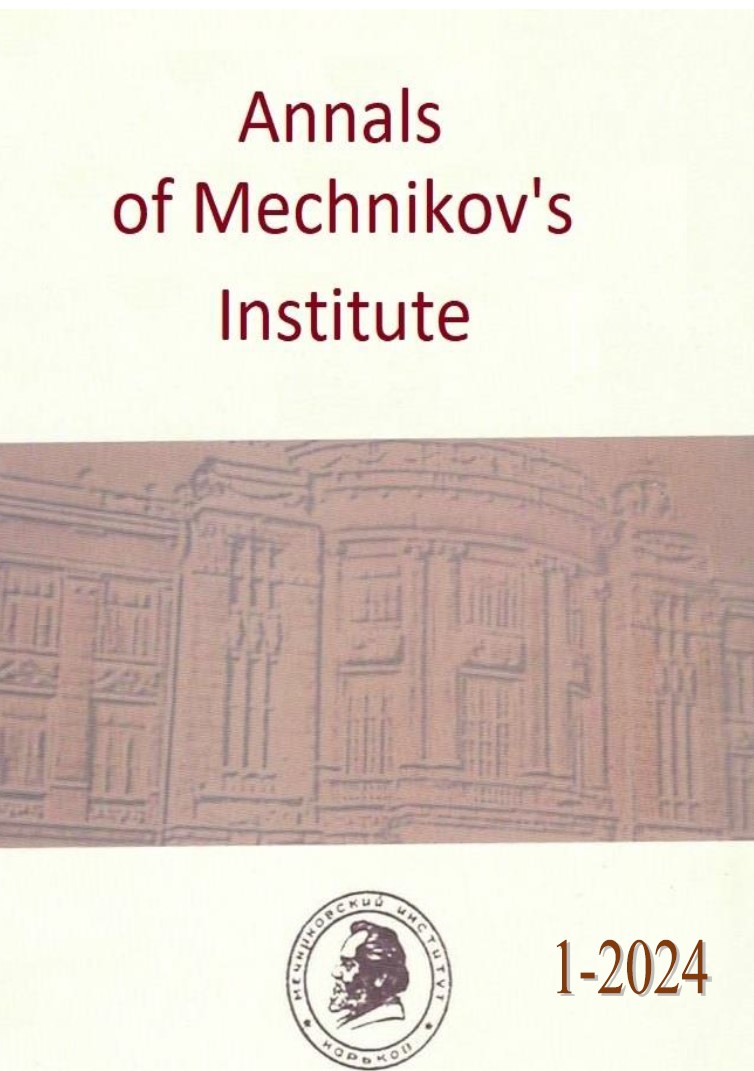Дослідження морфологічних та анатомічних ознак Ротиків садових (Antirrhinum majus l.) Трави
DOI:
https://doi.org/10.5281/zenodo.10838380Ключові слова:
Antirrhini majus herba, Snapdragons, morphological characteristics, anatomical characteristics, microscopic examination, raw material standardizationАнотація
Introduction. In recent years, scientists worldwide have been increasingly focused on searching for new sources of biologically active substances (BAS) with the goal of developing pharmaceuticals based on them. Currently, the study of plant raw materials that have a secured raw material base is of particular relevance. Among such plants, garden snapdragons (Antirrhinum majus L.) from the Plantaginaceae family attract attention. The aim of this study was to examine the morphological and anatomical diagnostic characteristics of garden snapdragon herbs. Materials and methods: the object of the study was garden snapdragon herb (Antirrhini majus herba) from the Overture and Snappy cultivar mix. The raw materials were harvested during the flowering phase of the plants in August 2023 in the Kharkiv region (Ukraine). The anatomical structure was studied using a Granum microscope at magnifications of 40-600 times; photography was carried out with a ScienceLab DCM820 camera for microscopes, and photos were processed using TSView 7 and Adobe Photoshop CC 2021. The raw material for anatomical study was fixed in an ethanol – glycerin – water mixture (in a 1:1:1 ratio). For microscopic examination, preparations of the epidermis of the leaf blade, stem, corolla epidermis, calyx, and cross-sections of the stem were prepared. The morphological characteristics of dried raw material samples were determined visually with the naked eye and using a magnifying glass (x10). Results and discussion. The morphological diagnostic features attributed to the whole garden snapdragon herb include: cylindrical stems, simple lanceolate leaves arranged alternately at the top of the stem and oppositely at the bottom, with reticulate venation. Zygomorphic flowers are gathered in a spike-like inflorescence. The calyx is pentamerous, divided, with lanceolate sepals that are pubescent. The corolla is bilabiate, with the mouth of the corolla closed by the projection of the lower lip. A sac-like protrusion is present at the base of the tube, with corolla colors ranging from yellow to pink-purple. All components of the raw material are pubescent. The raw material has a weak scent. The anatomical diagnostic features of the studied raw material include: the presence of thickened epidermal cells with a cuticle, anisocytic and anomocytic types of stomatal apparatus, pubescence with glandular and simple hairs, multilayered sclerenchyma, and a non-bundled type of stem structure.
Keywords: Antirrhini majus herba, Snapdragons, morphological characteristics, anatomical characteristics, microscopic examination, raw material standardization
Посилання
García-Barriuso, António Luis Crespí, et al. Mineral element composition in Antirrhinum subsection Streptosepalum (Plantaginaceae) in Western Europe (2012). Environmental Science. DOI:10.5209/REV_LAZA.2012.V33.40278
Wilson Y, Hudson A. The evolutionary history of Antirrhinum suggests that ancestral phenotype combinations survived repeated hybridizations. Plant J. 2011 Jun;66(6):1032-43. DOI:10.1111/j.1365-313X.2011.04563.x.
Hudson, Andrew & Critchley, Joanna & Erasmus, Yvette. (2008). Cultivating Antirrhinum. CSH protocols. 2008. DOI: 10.1101/pdb.prot5051
Cristiano G, Pallozzi E, Conversa G, et al. Effects of an Animal-Derived Biostimulant on the Growth and Physiological Parameters of Potted Snapdragon (Antirrhinum majus L.). Front Plant Sci. 2018 Jun 20;9:861.
DOI: 10.3389/fpls.2018.00861.
Li M, Zhang D, Gao Q, et al. Genome structure and evolution of Antirrhinum majus L. Nat Plants. 2019 Feb;5(2):174-183. DOI: 10.1038/s41477-018-0349-9.
Piao, Chun Lan et al. The combination of R2R3-MYB gene AmRosea1 and hairy root culture is a useful tool for rapidly induction and production of anthocyanins in Antirrhinum majus L. AMB Express 11 (2021): n. pag. DOI:10.1186/s13568-021-01286-6
Ramadan M., El-Shamy H.. Snapdragon (Antirrhinum majus L.) seed oil: Characterization of fatty acids, bioactive lipids and radical scavenging potential. Industrial Crops and Products. Volume 42, March 2013, Pages 373-379. DOI:10.1016/J.INDCROP.2012.06.022
Kumar G. A review of the chemical constituents and pharmacological activities of Antirrhinum majus (snapdragon). IP International Journal of Comprehensive and Advanced Pharmacology 2022;7(2):72-76. DOI:10.18231/j.ijcaap.2022.013
Beninger CW, Cloutier RR, et al. The distribution of two major Iridoids in different organs of Antirrhinum majus L. at selected stages of development. J Chem Ecol. 2007 Apr;33(4):731-47. DOI: 10.1007/s10886-007-9253-x.
Tomassini L, Serafini M, et al. A new iridoid diglucoside from Antirrhinum siculum. Nat Prod Res. 2017 Jul;31(14):1594-1597. DOI: 10.1080/ 14786419. 2017. 1286482.
Al-Snafi, Ali. Therapeutic properties of medicinal plants: a review of medicinal plants with central nervous effects (part 1). International Journal of Pharmacology & Toxicology / 5(3), 2015, 177-192
URL: Al-Snafi, Ali. The pharmacological importance of Antirrhinum majus – a review. Asian J of Pharm Sci & Tech 2015; 5(4): 313-320. 5. 313-320.
Saqallah, FG (Saqallah, Fadi G.) ; Hamed, WM (Hamed, Wafaa M.) ; Talib, WH (Talib, Wamidh H.) In Vivo Evaluation of Antirrhinum majus. Wound-Healing Activity. Scientia pharmaceutica. 2018. №45. DOI: 10.3390/scipharm86040045
Saqallah, FG (Saqallah, Fadi G.), Hamed, WM (Hamed, Wafaa M.), Talib, WH (Talib, Wamidh H.), et al. Antimicrobial activity and molecular docking screening of bioactive components of Antirrhinum majus (snapdragon) aerial parts. Heliyon. 2022. DOI: 10.1016/j.heliyon.2022.e10391
Jina Seo, Jungjae Lee, Hyi Young Yang, et al. Antirrhinum majus L. flower extract inhibits cell growth and metastatic properties in human colon and lung cancer cell lines. Food Science & Nutrition. 2020. №8. р. 6259-6268. DOI: 10.1002/fsn3.1924
The State Pharmacopoeia of Ukraine: in 3 volumes / State Enterprise Ukrainian Scientific Pharmacopoeial Center for Quality of Medicines. — 2nd edition. — Kharkiv: State Enterprise 'Ukrainian Scientific Pharmacopoeial Center for Quality of Medicines,' 2015. Vol. 1. 96. 573 p. ISBN 978-966-97390-0-1.
##submission.downloads##
Опубліковано
Як цитувати
Номер
Розділ
Ліцензія
Авторське право (c) 2024 Анали Мечниковського Інституту

Ця робота ліцензується відповідно до Creative Commons Attribution 4.0 International License.





